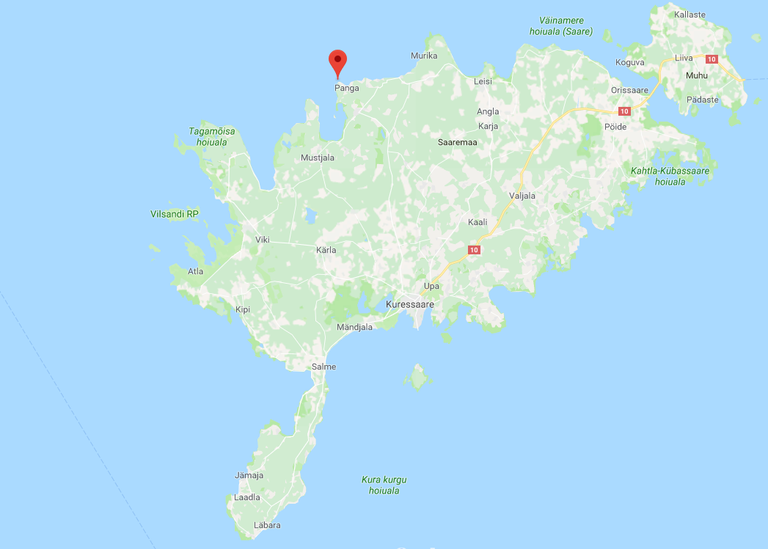My favourite places to go in Saaremaa.
KURESSAARE EPISCOPAL CASTLE
Kuressaare Episcopal Castle, also known as Kuressaare Castle, was built in the 14th century. Today, the Castle houses Saaremaa Museum with its permanent exhibition and sundry temporary exhibitions.
The convent building of the Kuressaare Episcopal Castle is the only surviving medieval fortification in the Baltic countries that has not been significantly reconstructed. In addition to aesthetic pleasure that the elegant, decorous and magnificent architecture offers, a visit to the castle allows to explore the local history through an immediate experience and to feel the breath of the Middle Ages.


:::::LOCATION OF KURESSAARE EPISCOPAL CASTLE::::::::::

KAALI FIELD OF METEORITE CRATERS

The approximate time of Kaali meteorite fall is 7500-7600 years ago.
Meteorite fall caused big damages on already inhabited Saaremaa, it could be compared to explosion of atomic bomb. At the height of 5-10 km meteorite fell apart and came down to the ground in pieces the biggest of which created a big crater with diameter of 110 m and depth of 22 m and 8 smaller craters.
Around the beginning of the Common Era, a massive stone wall was built around the Lake Kaali. The many findings of the bones of domestic animals give a reason to believe that it used to be a sacrificial site.
Interesting to know: Among the world's giant craters Kaali crater is on 8th place. Kaali field of meteorite craters on Saaremaa is the rarest nature wonder in Estonia, being at the same time the most spectacular in Eurasia.

::::::::::::::LOCATION OF KAALI CRATERS:::::::::::::::::

PANGA CLIFF

The Panga cliff stands, stark in colour, at a maximum height of 21.3 m, and runs for about 2.5 km! A vast slate, as all cliffs of Saaremaa are, wall reaching straight up from the surrounding beach, the cliff impacts its environment in a interesting way. A couple of hundred meters away from the cliff, the sea experiences a steep slope - visible on stormy days when onlookers can watch a line of foamy waves develop. At the highest point of the cliff, there is an ancient sacrificial site where people used to sacrifice to the sea.
Did you know...?: Panga cliff is the highest Northern coastal cliff in Saaremaa and Muhu, and the highest point of Panga cliff used to be an ancient ritual site where people were sacrificed for the sea.

::::::::::LOCATION OF PANGA:::::::::::::::

SAAREMAA RALLY

The first car rally on the island of Saaremaa was held in 1974. Since 1993 the event has been an international one and gone by the name 'Saaremaa Rally'. This year's rally will include drivers from Finland. In the past the island's roads have played host to Sebastian Lindholm-Pertti Lahtinen and women's world champion Eija Jurvanen. No rally has ever been held without the Kaugatuma-Toomalõuka speed trials, which are what the Saaremaa Rally is best known for. The town trial - which was first run in 1980 - has regained popularity in recent years.


SUUR TÕLL AND PIRET

The sculpture, situated in front of the SPA Hotel Meri was created in 2002 by a renowned Estonian sculptor Tauno Kangro. The sculpture depicts Suur Tõll (the Great Tõll), a mythical hero of the island Saaremaa, and his wife Piret.
Good to know: According to the Legend, Sõrve peninsula was important to Tõll, as from there he reached the shortest way to the island Ruhnu, where he had his cabbage field. When his wife Piret started to make a fire under the cauldron, then Tõll went through the sea to his cabbage field and came back in half an hour, so that he could hand Piret the cabbages when the water had just started to boil.


Content!